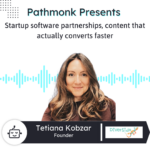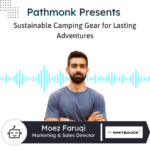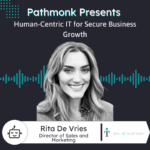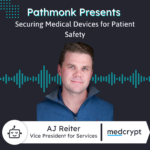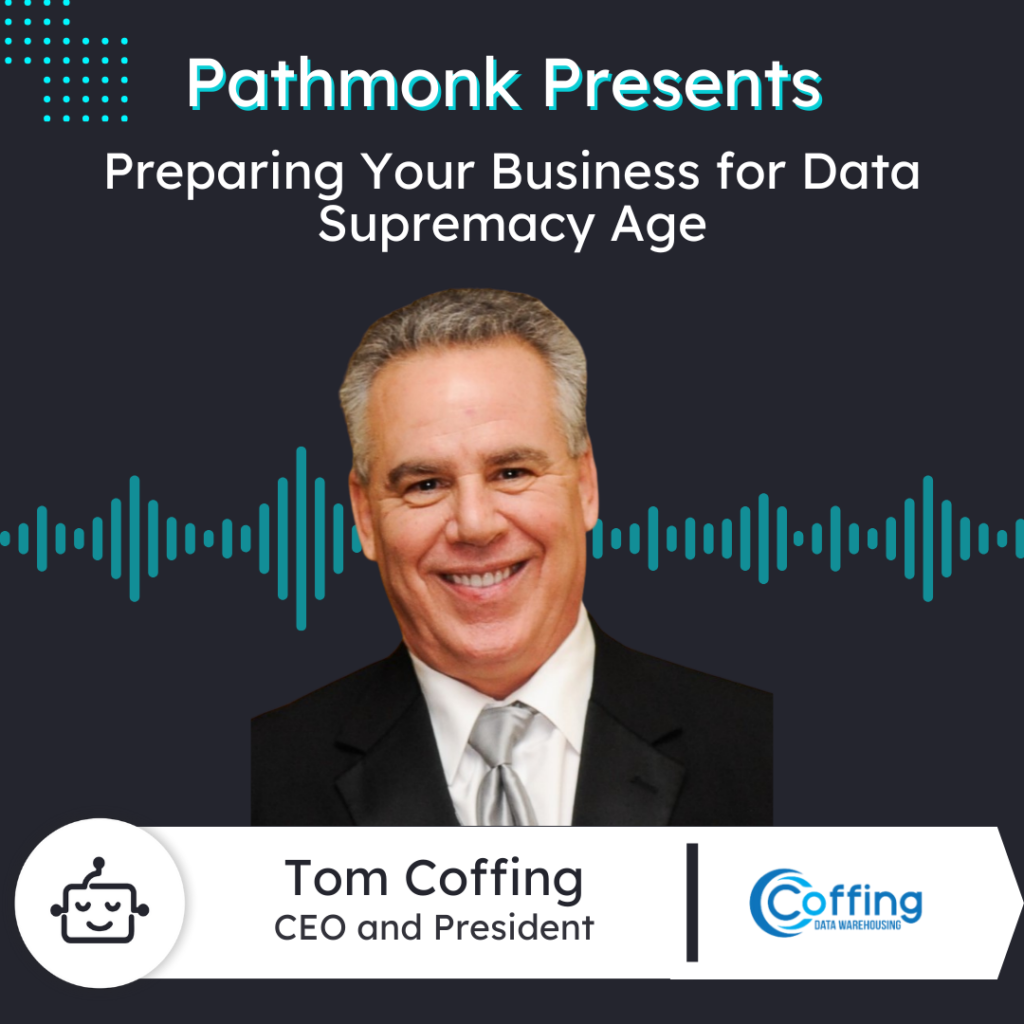
Introduction
Experience the cutting-edge insights of data warehousing pioneer Tom Coffing as he unveils the groundbreaking capabilities of his company, Coffing Data Warehousing.
Discover how they’ve revolutionized data integration, empowering businesses to seamlessly join, migrate, and query data across multiple platforms effortlessly.
He also shares valuable marketing insights for this market, how they work on lead generation and the importance of staying updated on the best marketing practices.
Increase +180%
leads
demos
sales
bookings
from your website with AI
Get more conversions from your existing website traffic delivering personalized experiences.
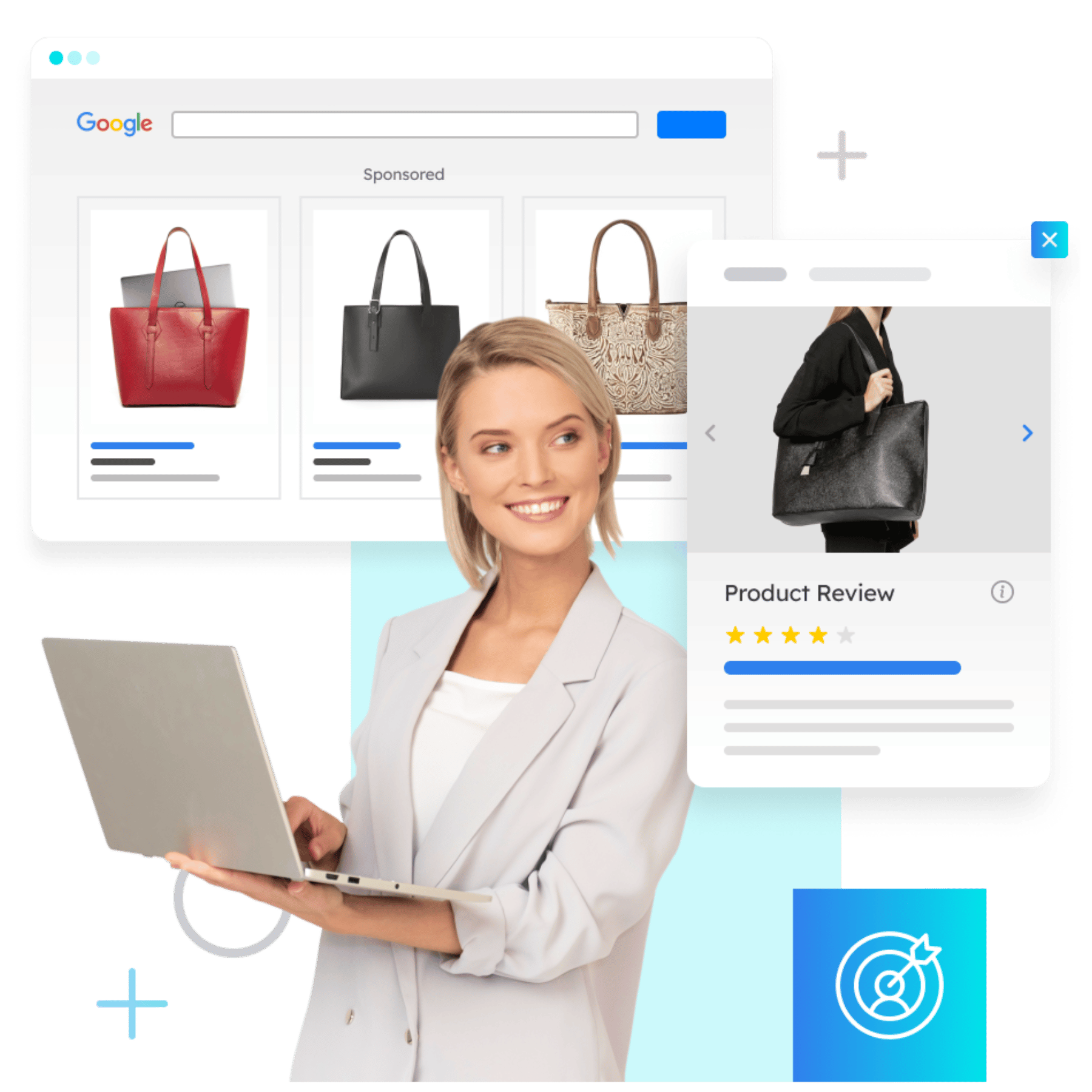
Rick Veronese: Pathmonk is the AI for website conversions. With increasing online competition, over 98% of website visitors don’t convert. The ability to successfully show your value proposition and support visitors in their buying journey separates you from the competition online. Pathmonk qualifies and converts leads on your website by figuring out where they are in the buying journey and influencing them in key decision moments with relevant micro experiences like case studies, intro videos, and much more. Stay relevant to your visitors and increase conversions by more than 50%. Add Pathmonk to your website in seconds. Let the artificial intelligence do all the work and increase conversions by 50% while you keep doing marketing as usual. Check us out at pathmonk.com.
All right, everyone, welcome to today’s episode. Let’s talk about today’s guest. We have Tom from Coffing Data Warehousing. Good to have you on today’s show, sir. How’s it going?
Tom Coffing: Great, Rick. Thank you for having me.
Rick: Of course, of course. So, you know, we were talking just a second ago offline, and I just wanted to know a little bit more about your company. But I wanted to wait to hit record, right, so I can hear it in your own words and we can share with the audience. So in your own words, what’s the art of what your company does, and how would you describe it to someone new?
Tom: I’ve been on a 50-year journey—IT business programmer, operator of computers, and teacher. Thirty years ago, I started Coffing Data Warehousing, and we did training. We trained a thousand different companies around the world on their Teradata systems. I began writing books—I’ve written 90 books—and expanded from Teradata to every system.
Now my company, what is so brilliant about it? So brilliant that Microsoft OEM’d our software for three years because they wanted to give it to their customers. I’ve been on a project for 20 years to build the greatest software in the IT industry that works on every system, migrates data between every system, converts table structures and the DDL between them all in seconds, and allows our customers to join data across all systems as if every system was one.
It was once thought impossible, Rick, but we are the company that did that, and we’re so excited about it. We’ve automated the most difficult tasks. It almost looks like AI, but it’s just experience—allowing people to do things they never thought they could before. It’s so exciting to be onto something this relevant.
Rick: It’s a long time coming. It sounds like you have the right energy, and it sounds like an awesome project. I’m curious—what kind of businesses does this help the most? What kind of industries do you feel you’re able to serve the best?
Tom: We have a lot of federal and state contracts in the U.S. Anybody with multiple database platforms can benefit from this. Insurance and financial industries are skyrocketing for us because they use traditional databases like Oracle, DB2, and SQL Server but are moving to the cloud—Databricks, Snowflake, Amazon Redshift, and others.
Any user with access to more than five systems is in heaven with our product. They can query them all, migrate tables in seconds, and integrate data without boundaries. It’s great when you have one platform to query, but when you have a wide variety, our product is unmatched.
Rick: That’s exciting. And you mentioned you’ve had large companies with you for more than 15 years—that’s impressive. How does your audience typically find out about you?
Tom: With 90 books out there, many people have read my Netezza or Snowflake books. But the biggest driver is our blogs. I focus on the key topics IT professionals look up, like date functions and analytics. Our blogs attract thousands of visitors daily, driving them to our website where they can see Nexus in action.
Rick: Right, so it’s an education piece that leads them to your website and eventually becoming a client. How important do you think your website is for attracting clients, beyond the blogs?
Tom: It’s critical. Our website has a beautiful look and feel, with thousands of blogs, hundreds of videos, and books. It’s the engine of our business. We reach out via email, driving traffic to the site. People are often stunned by what they see—20-table joins across systems with SQL changing dynamically.
Rick: Any tools or tips for making a great converting website?
Tom: We use Lead Forensics to track every visitor and analyze which blogs drive the most traffic. It’s important to provide valuable, relevant content. IT people are smart—they need to get what they’re looking for, or they won’t return.
Rick: Agreed. You’ve clearly mastered creating value. Switching gears—what are the key tasks you focus on daily as a leader?
Tom: As a small business owner, I focus on product design, promoting on social media, writing blogs, doing demos, and interacting with customers. My day varies depending on priorities, which keeps things exciting.
Rick: Sounds like you wear many hats. Now, let’s jump into rapid-fire questions. You ready?
Tom: You got it.
Rick: What’s the last book you read?
Tom: Snowflake Architecture and SQL.
Rick: If there were no limits with technology, what’s one thing you’d love to solve as a leader?
Tom: Boundaries in data access. One day, I believe people will query any system seamlessly without caring where the data comes from.
Rick: If you could automate one repetitive task, what would it be?
Tom: Publishing content to social media. It’s tedious and time-consuming.
Rick: Last one—what advice would you give yourself 20 years ago?
Tom: Be cautious about trust and hire better. I made too many mistakes but never repeated the same one.
Rick: That’s a great way to close. Thanks so much for joining us, Tom. Before we wrap, what’s the one thing listeners should remember about your company?
Tom: We’re five years ahead of major players like Microsoft and Google in enabling seamless data access and integration across systems.
Rick: Perfect. Thanks again, Tom.
Tom: Great seeing you, Rick. Thank you.
Rick: Likewise. Bye, everyone.




